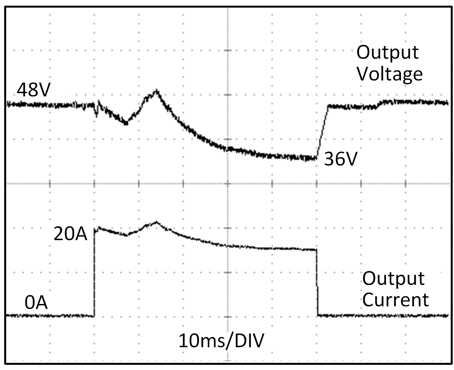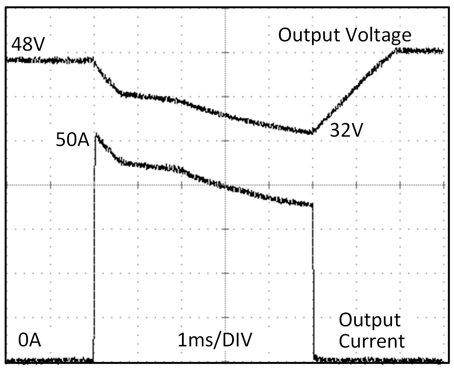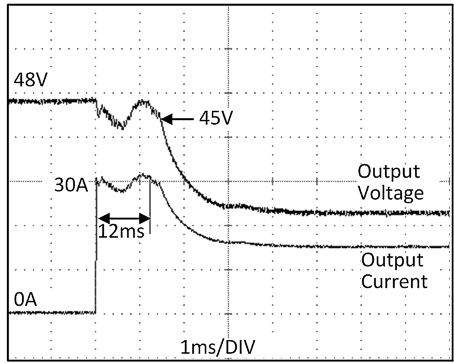Peak current capability
The device can deliver peak currents (for up to several milliseconds) that are higher than the specified short-term currents.
This helps when starting loads with high current intensity. Magnetic coils, contactors and pneumatic modules often have a stationary coil and a pick-up coil. The inrush current requirement of the pick-up coil is several times higher than the stationary current and usually exceeds the rated output current (including extra power). The situation is exactly the same when starting a capacitive load.
The peak current capability also ensures safe operation of downstream circuit breakers of load circuits. The load circuits are often individually fused with circuit breakers or fuses. In the event of a short circuit or overload in a circuit, the fuse or circuit breaker needs a certain amount of overcurrent to open in time. This prevents a voltage drop in adjacent circuits.
The additional current (peak current) is supplied by the power converter and the built-in large-size output capacitors of the power supply unit. The capacitors are discharged during such an event, which leads to a voltage drop at the output. The following two examples show typical voltage drops for ohmic loads:



 | Control of DC-OK relay Please note: The DC-OK relay is activated if the voltage drops by more than 10% for more than 1ms. |
Peak current voltage drops | |
|---|---|
Typically from 48V to 36V | At 20A for 50ms, ohmic load |
Typically from 48V to 39V | At 50A for 2ms, ohmic load |
Typically from 48V to 32V | At 50A for 5ms, ohmic load |